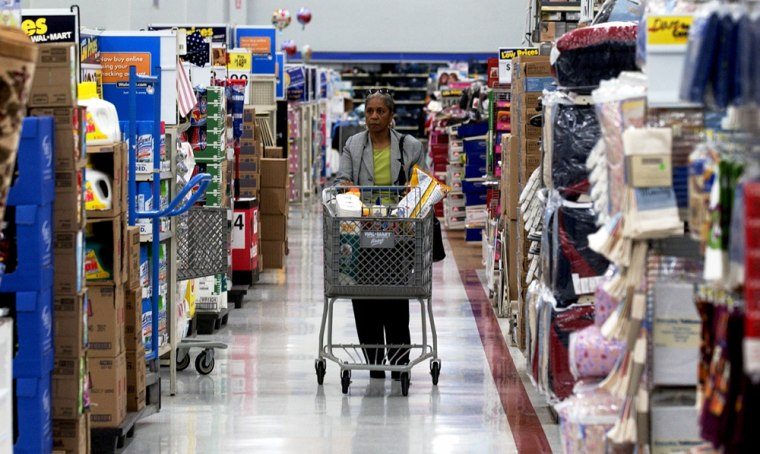With a weak back-to-school season behind them, the nation’s retailers are focused on the holidays and what steps they need to take to get consumers excited about shopping again. That could mean some quick merchandise changes and more aggressive discounting than they originally planned.
“The back-to-school period is not a bellwether for the holiday season, but there are a lot of lessons that you can take out of that period,” said Michael P. Niemira, chief economist at The International Council of Shopping Centers. “That is what retailers need to focus on.”
It’s too late for merchants to make any dramatic changes in their holiday merchandise, but they can still tweak their collections and marketing plans. Struggling Sears, Roebuck and Co. decided last month to change its holiday decor, with oversized photographs of holiday gifts that Sears will begin placing in stores in mid-November.
September’s sluggish sales figures, released to the public on Thursday, offered retailers some ideas about what might click with shoppers and what probably wouldn’t during the holidays.
Among the hot sellers for the early fall season were accessories including silk wraps, ponchos and brooches and other jewelry. But muted colors fared poorly, according to Marshal Cohen, senior industry analyst at NPD Group Inc., a market research company based in Port Washington, N.Y. And while preppy fashions did well, analysts said there’s not a lot of must-have apparel to excite consumers this holiday season.
“They have to have looks that catch people’s eyes. Some of the colors for fall were too subtle,” Cohen said.
Four months of slow sales
Clearly, retailers are in a different position from a year ago, when they had just come off a strong back-to-school season, boosted in part by tax rebates that served as incentives for consumers to spend freely. But stores struggled in October, November and the early part of December, only to be saved by a shopping spree before and after Christmas.
This year, after enjoying robust sales from January through May, stores suffered four consecutive months of sluggish sales as the economy lost momentum.
The International Council of Shopping Centers-UBS sales tally of 71 retailers reported Thursday a modest 2.4 percent sales gain in September. The results were higher than August’s 1.3 percent gain, but well off the average 6 percent increase of January through May. The tally is based on what the industry calls same-store sales, or sales at stores open at least a year, considered the best indicator of a retailer’s performance.
September’s sales results sent mixed signals about how various sectors could fare for the holiday season. Teen retailers such as American Eagle Outfitters Inc., and Abercrombie & Fitch did well, and upscale stores such as Neiman Marcus Group Inc. and Nordstrom Inc., continued their winning streak, as the well-heeled consumer seems to be insulated from the economy’s weakness.
Gas prices, job insecurity weigh heavy
But the low- to mid-price department stores and discounters including Wal-Mart Stores Inc. are struggling as rising gasoline prices and job insecurity limit their customers’ spending on clothes and other nonessential items.
The weaker-than-expected jobs creation report announced Friday by the Labor Department was likely to deepen Americans’ concern about the economy. Companies added 96,000 jobs to their payrolls in September, far fewer than the 150,000 that economists forecast, and August job gains were revised downward to 128,000 from 144,000.
“There is definitely job market uncertainty,” said Ken Perkins, an analyst at RetailMetrics LLC, a research firm in Cambridge, Mass. “Retail sales are pretty much correlated with how the job market is performing. This is cause for concern for the holiday season.”
The good news is that after seeing a slowdown in consumer spending in late spring, retailers decided not take any major risks, and were approaching the holiday season with only slightly more inventory than a year ago, according to John Morris, an analyst at Harris Nesbitt.
Still, stores have to move out fall merchandise to make way for holiday goods, and Morris said retailers are giving larger discounts to clear selling floors.
Attention shoppers: Discounts on the way
More markdowns are expected. “I think you may see more discounting this year than we saw last year,” if the weak consumer spending trend continues,” Perkins said.
Still, stores don’t appear to be panicking, not yet at least.
Bombay Co. Inc. which suffered a 20 percent drop in same-store sales in September, noted in its release on Thursday that it is not carrying as much holiday merchandise as it did last year, and has increased advertising for the balance of the year. And company executives remain hopeful.
“As we shift into the gift-giving season, we believe that consumer demand will rebound,” said James D. Carreker, chairman and CEO, in a statement.
Margery Myers, a spokeswoman at Talbots Inc., which had a 1.3 percent same-store sales decline in September, said the apparel retailer won’t be making any major adjustments because of September’s performance, although the company always does some tinkering. “We feel pretty good about what we have in place,” she said.
